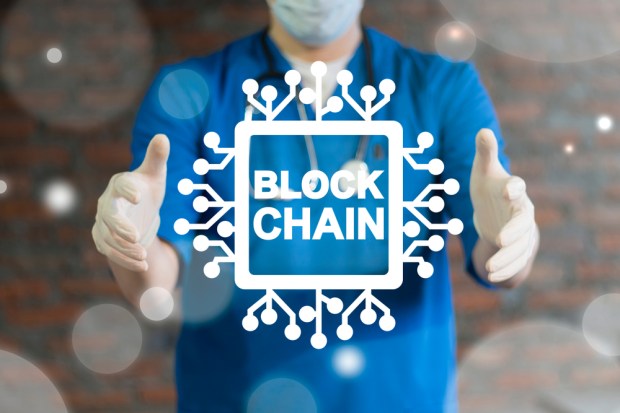Blockchain: A Cure For What Ails Health Care Payments?

Healthcare could be, well, a bit healthier when it comes to payments, and data management…and coordinating care in general. One firm, SimplyVital Health, sees blockchain as some timely medicine, along with smart contracts and an immutable trail of care received, as CTO Lucas Hendren tells PYMNTS.
Health care has no easy fixes when it comes to payments. Or data management. And for a sector that is about 18 percent of the U.S. GDP, inefficiencies exist on a huge scale.
Consider the fact that in 2016, InstaMed estimated that 10 percent of the roughly $3.4 trillion collected in healthcare payments is wasted through inefficient processing. And in an age where data is increasingly digital, and always valuable, information used intelligently and securely means efficient care, which saves providers and patients effort and money.
Might blockchain link those far-flung parts of the continuum, across processes and payments?
In an interview with PYMNTS, SimplyVital Health CTO Lucas Hendren said that the company’s platform, ConnectingCare, which uses the blockchain protocol, focuses on post-acute care tied to communication between providers – and has its sights set on improving payments, too.
In essence, ConnectingCare, which is focused on the $10 billion bundled payments programs, helps far-flung practitioners view patient data across different points of care, while also helping to forecast costs. All of this is done across the audit trail that is the hallmark of blockchain. An ICO is ongoing, which Hendren said is geared, through use of proceeds, to “jump start” its offerings of ConnectingCare and Health Nexus (a blockchain protocol it is building).
Hendren said that health care is a good fit for digital initiatives – and for blockchain in particular, as “the digital infrastructure has not been updated in a long time.” In an ecosystem where record-keeping centers on the most sensitive data tied to individuals, that’s less a function of technological concerns than trust.
But blockchain offers immutable evidence of what actually happened in any health care setting, said Hendren – a trail that extends across data and dollars. Consider a hospital where all the patients are disappearing, perhaps headed over to a rival enterprise. One might be able to see that their medical records had been viewed by a certain doctor, hours before the practice lost that patient.
The bigger picture is one where “costs are lower for both the patients and the hospital. Every day that the patient is in the facility, or in the hospital, costs both money.” An optimal stay, he said, is about two days, and after that, it is much better to be treated and to convalesce at home.
As care is rendered, providers can indeed benefit from what can be thought of as a pre-populated payments ecosystem. Hendren noted that in a hospital setting and beyond, the steps are concrete – after all, there are “only so many ways a hip fracture can be treated.”
Smart contracts, said the executive, which may see incremental rollout by SimplyVital over the next six months (and where initial interest has come from insurance companies and providers), can be agreed to in advance, so that payments are allocated and released as each step in the care continuum is completed. Reimbursement comes on the heels of collaboration. Blockchain enables a variety of direct pay scenarios amid coordination of care, making sure providers are paid in a speedy manner. The possibility of payment in minutes marks a sea change amid a reimbursement landscape that can see both providers and patients waiting months (perhaps even years) for paper checks from insurers.
In health care, data is itself a form of currency. The CTO told PYMNTS the firm is considering an optional, distributed ledger that could be used as a data exchange. Health care data, he said, has value outside of the care setting. As Hendren told PYMNTS, health care record could be worth as much as $1,500 to a research group or university.
“It is much cheaper for a research group to come to you directly” and the data is truly anonymous, he said, “with no way of tracing it back to you” for cancer research or for asthma.
“It’s a massive future revenue stream for everyone on the planet,” Hendren said.
